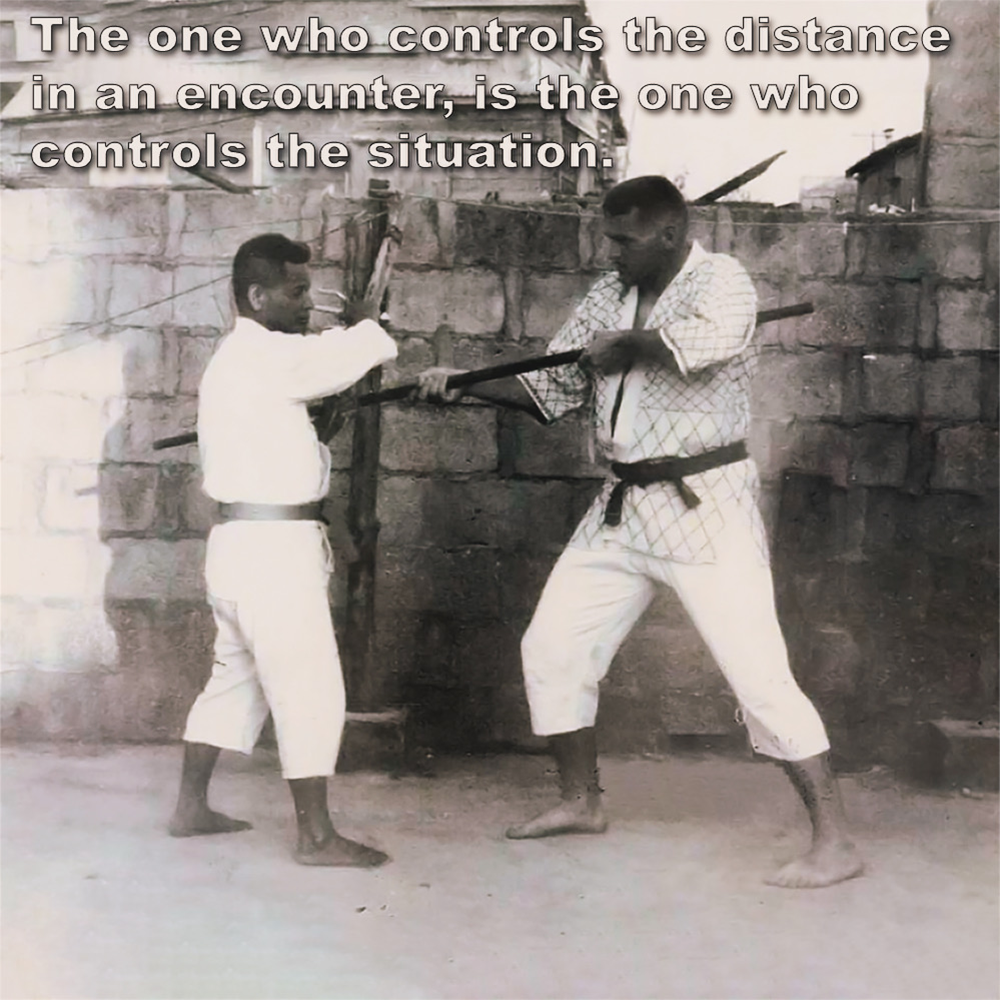
(1 minute 56 second read)
The one who controls the distance in an encounter, is the one who controls the situation.
.
“Maai” (間合い) is a Japanese term that means “interval” or “space between”. It refers to the optimal engagement distance in combat, encompassing both physical separation, and the timing of the attack and defense (Maai is not distance alone).
.
This is not one, but two, sometimes vastly different, distances.
.
Firstly, my Maai in relation to you, will always be different from yours to me – even though the distance between us is constant.
.
This becomes easy to understand when you have practitioners of different heights. As an example; one who is six feet tall, the other being five feet tall.
.
If the two of them were to stand side-by-side facing me, at my arms length; from the 6 foot guy, I would be fully within his Maai, and just outside of the other.
.
However, they would both be within my Maai. These differences are naturally based on the length of each individual’s arms and legs.
.
So your Maai is the ideal fighting distance – also you have to take into consideration the time taken to cross that distance, and the angle and rhythm of attack.
.
So timing and rhythm (‘hyoshi’) are just as crucial. By understanding the flow of the fight, and using ‘hyoshi’ to your advantage, you can find the perfect moment to attack or defend.
.
Basically it’s trying to judge the constantly changing distance and space, different for each individual, and each type of attack.
.
Further to our empty-hand practice, one major benefit arising from training in a number of different weapons systems, is flexibility regarding Maai,
.
For example, each encounter is different, because each individual’s body is unique, and we must make a series of minute adjustments to take utmost advantage of the Maai and make it work.
.
Training in a weapons system, and using different types of weapon, the compensations you must make are clearer to see. As an example, perhaps one practitioner is using a ‘Bo’ while the other is using a ‘Tonfa’, a difference in size.
.
Studying in several different weapons systems then, gives you the chance to work on different Maai, as defined by the length of each weapon. More importantly, it teaches you flexibility and a greater awareness.
.
While Japanese karate often prioritizes maintaining a precise Maai, Okinawan styles may emphasize developing a ‘feeling’ for the optimal range through ‘tegumi’ (grappling) or ‘kakie’ (pushing hands).
.
All of this can be very difficult for the beginning student to grasp, and many systems include a more basic, static style of training, so that students can get the hang of techniques before being confronted with the full complexities of Maai.
.
Maai: The space that speaks volumes in combat. Master the distance, master the fight.
.
.
Image of Shimabuku Tatsuo – Isshin-Ryu & John Bartusevics
.
